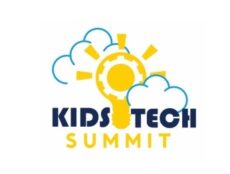
Providing equity and access to high-quality STEM and Computer Science education is a goal shared by many. For years policymakers and the education community have attempted to sever the relationship between students’ learning and their socioeconomic background. Unfortunately, thus far, the data shows these interventions have been unable to break the link between socioeconomic status and achievement. Even still, this mission stands.
Today, we are met with mounting challenges which include the devastating effects brought on by COVID-19. Implementing active learning is a significant step and proven strategy towards reaching the goal of closing the achievement gap.
What Is Active Learning?
In classrooms that utilize active learning, students are engaging with information along with their teacher and their peers. Engaging with information includes connecting new information with prior knowledge via a variety of methods such as reading, writing, discussing, explaining, and problem-solving. Students are active participants, as opposed to passive recipients, in classrooms that feature active learning.
However, the implementation of active learning is currently still the exception. Students responding to questions from their teachers, by some accounts, only take up five percent of classroom time. Less than one percent of that time is associated with open-ended questions or responses.
Tools and Training for Active Learning
Teachers and students both enjoy working in classrooms where there is high engagement. However, without the correct tools and resources, implementing active learning can be difficult. If students feel that they cannot be successful with an activity, they will withdraw. Therefore, it is important that active learning is framed around activities in which students can immediately experience success — activities with a low barrier of entry but a high ceiling. The high ceiling is important. If the task is too easy and students can immediately get the answer, then students are not provided with the opportunity to construct their own understanding.
"students in the active classroom learn more, but they feel like they learn less…this negative correlation is caused in part by the increased cognitive effort required during active learning" #learning https://t.co/hlvp93PW8o
— Neil Mosley (@neilmosley5) November 9, 2020
When I first began teaching, this exact scenario played out many times in my language arts classroom. I was using the textbook provided, and I was asking the students to discuss, explain, and write about the stories contained within the textbook. The problem was that the stories were dull and flat. Trying to have discussions around bland characters and dull plots was pointless. I told the students to leave their textbooks in their lockers and started using No Fear Shakespeare.
In the short term, it was great! The students performed scenes, we had great discussions. The students were engaged, and they learned a lot. It was, however, A LOT of work. I was in my principal’s office every week because other teachers thought I wasn’t following the curriculum guidelines. I was one of the many teachers trying to create and then teach my own lessons. I also had to create my assessment materials. And, I had to do all of the research and study in order to teach the plays to my students. My solution worked well for a short period of time but proved to be almost impossible to scale to an entire school year.
How VEX Is Supporting Teachers and Schools
Research indicates that active learning is an effective way to narrow the achievement gap in schools. It is also clear that implementing active learning can be challenging, and teachers and schools need to be provided with support. What can VEX do to help?
Training. The true change-agents in education are classroom teachers. Teachers need tools and training in order to feel confident and prepared in their classrooms. To that end, we are proud to share our Educator Certification Program. VEX offers free, online training that helps educators at all different ability levels. By the end of the VEX Certified Educator program, you will be fully prepared to implement VEX Robotics into your classroom and become a technology and innovation leader within your school and community.
STEM Labs. STEM Labs function as “plugin” lessons that can fit into your existing curriculum and be used to facilitate active learning. Students enjoy hands-on-learning activities that allow them to apply technology, science, math, and engineering skills as they enjoy a 21st-century learning experience. You can also utilize multiple labs in sequential order to create a unique, extended learning experience for your students. Teaching Shakespeare while I was teaching 6th grade was great fun, but it was also exhausting and not scalable. We created STEM Labs to provide you with the same exhilarating experience of teaching a highly-engaged classroom, without having to spend time doing background research. We’ve provided you with everything you need.
Let’s learn together.
Jason McKenna is the Director of Global Educational Strategy for VEX Robotics, overseeing all curriculum development and classroom integration for the VEX IQ and VEX EDR platforms. McKenna is an accomplished educational practitioner and strategist with 20 years of classroom experience and success in implementing STEM programs and robotics competitions for students at all levels. Jason joined Robomatter in 2015, which was acquired by VEX Robotics in 2016. Prior to Robomatter, McKenna spent years serving as a K-8 Gifted Support Teacher in the Hopewell Area School District outside of Pittsburgh, PA where he had the chance to work with the CMU Robotics Academy. Jason received his undergraduate degree in Elementary Education and teaching from Geneva College and his master’s degree in Curriculum and Instruction from the Clarion University of Pennsylvania. VEX Robotics is the leading provider of educational curriculum, computer programming and robotics kits used by today’s educators, mentors.
Featured Image: Jeswin Thomas, Unsplash.









No Comments